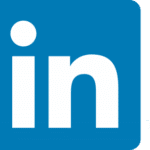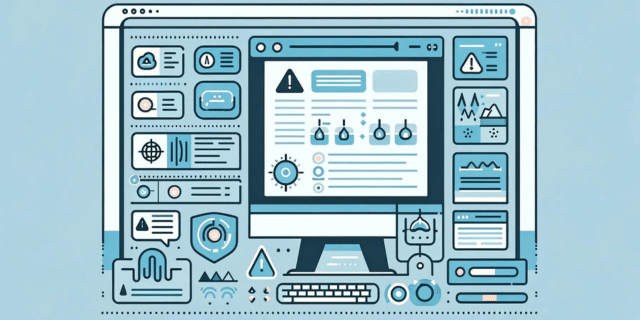It’s Freddie here from Just After Midnight introducing the Agency Connection series. You can watch the full interview here.
Since heading up JAM’s operations in the US, I’ve had the chance to work with some amazing agencies and individuals. And I’d like to share the insights we’ve picked up along the way.
Going forward, we’ll be covering a range of agencies in the development, transformation and creative spaces – and meeting the people behind the magic.
If you’d like to be featured, just drop me a line.
Today’s connection
Name: Jeff Hansen
Agency: WayPath Consulting
Role: CTO and CISO
Agency focus: Digital customer engagement in B2B and government
Today’s topics: WayPath and Jeff, onshore and offshore, digital transformation post Covid
Why Jeff’s a great person to speak to: Working with state and local government, as well as B2B, Jeff has a uniquely broad insight into how transformation is adopted in non-commercial entities. This breadth and depth of knowledge sheds light on changes affecting the entire industry.
The interview
Thanks for joining us, Jeff. Excited to have you on board. Can you tell me a little about yourself and WayPath consulting?
Sure. So, I kind of fell into tech in an accidental way. My degree was in psychology, and I started doing research after I graduated but found that I really enjoyed learning about the virtual laboratories that enabled our work more than the research itself.
As I became more familiar with that technology, I got more and more into that side and less into the research space. A few years later, I joined a consulting firm as a junior programmer. That was 16 years ago. And I’m still here now.
I’ve worked my way up through a few areas of the business to leadership, helping our firm to grow.
As for WayPath, we’re focused on three solution areas: digital engagement, customer relationship management and customer communication management. That means working with digital experience platforms and helping our clients (often state and local governments) to build a strategy and ultimately to implement it.
WayPath serves a range of clients but you have a core focus on local government. Tell me a bit more about your sweet spot in the market and what separates you from your competitors.
As you say, we focus on B2B, plus state and local government. We also like focusing on areas that are highly regulated and have a lot of data security requirements.
We have our SOC 2 certification and we’re very conscientious about data and privacy. We work a lot on reducing back-office complexity and gaining efficiencies, which is an area in digital experience platforms that’s not fully realized.
By helping to focus there, we’re able to elevate the return on investment that clients (including local and state governments) get from these platforms.
But as to what really differentiates us, well, WayPath was founded in 1997, and our founder likes to say it was created to put the human before the resources.
So, really, WayPath is all about our people and about treating our people as humans. I feel like our people are our biggest differentiator.
WayPath is fully onshore in the US. This is less common these days. Can you provide me some insights into your strategy there?
Yeah, it is fairly uncommon, and people have moved offshore for various valid reasons, probably the biggest one being cost savings.
We’re really focused on quality and strategy and providing high-caliber resources to our clients. And so, there are times where there’s some commodity work or staff augmentation that doesn’t fit our model as well.
And that’s totally fine. We will counsel our clients that they might be better served with a different model.
But really, for people who are looking to work in the same time zone, for people who are looking to work with onshore resources that have this depth of experience, that provides a differentiator.
Obviously it comes with a cost. But we’ve found there are clients who’re willing to pay that premium for onshore strategic resources.
You’ve talked a little bit about your local government credentials and it’s fair to say no one was forced into digital disruption like the government during Covid. Tell me more about some of your government client experiences and how you’ve been consulting post-pandemic.
Government modernization is really something that has been slow to happen, but it’s taking off now.
I think the federal space has been a little bit faster than some of the state and local governments who don’t quite have those same resources.
But now, it’s them we’re seeing begin to pick up and it’s really about creating the same caliber of great customer experience that you see with big brands for constituents of state and local governments.
One of the things that holds governments back is what we actually saw affecting large organizations previously, which is that they tend to portray themselves to the public as they’re organized internally.
By that I mean they think about themselves as a very matrixed organization with various departments that do these specific functions. Whereas as a constituent, I’m coming to my government to get some service done or to get some piece of information.
Of course, that might require multiple departments. But really, the information and the way that it’s presented should be of a single service or resource – not a collection of interconnected departments.
And so, getting government out of that view, and getting them to collaborate across departments is really important for creating these exceptional customer journeys that people now expect.
It’s not just that they want it or that they feel like it’s a nice thing to have. We’ve been trained to expect great customer experiences and governments should be no different from any of the other organization.
Moving onto scaling WayPath, while everyone is having issues finding great engineers, you’ve been focussing on recreating your sales cycle. Can you tell me more about that?
Finding great people is going to be a difficult thing in any market.
But I think one of the bigger challenges as we’ve grown the company has been moving from a relationship-based sales methodology. Because it just doesn’t scale past a certain point.
As we looked to break into different markets in the US and internationally, as we looked to finding clients in new verticals, we really had to reinvent the sales process.
We ended up with a much more disciplined way of going after our sales; a more disciplined way of creating inbound leads and handling those leads; we got selective about how we pursued RFPs and particularly blind RFPs.
Sometimes it’s not clear what problem the client’s trying to solve. And all the information’s buried in a 50-page document, only two pages of which are relevant.
So, it’s been an interesting problem to solve and it’s one that we’re still solving.
So drawing both those threads together, what products and services have you seen clients investing in post-pandemic, whether they’re governments trying to present a singular touch point or other large organizations. Has there been a lasting change in what clients are interested in?
I think a lot of clients are investing less in new software and services.
In the last 12 to 18 months, we’ve seen companies become much more financially conservative as their outlook on the macroeconomic conditions becomes less rosy.
So people are trying to do more with less or more with the same.
In the digital experience space, I see this in the rise of purchasing pieces of a composable platform rather than some of the big monolithic suites.
Instead of those multimillion-dollar, multi-year deals, we’re seeing smaller point solutions being a bigger part of digital transformation initiatives.
People are really trying to figure out where smaller services fit within their existing stacks rather than ripping the whole thing out and replacing it with this big solution with a really long ROI period.
And so, I think because of that, some of the deals are becoming smaller. But I think they’re also more focused.
And in terms of the sales cycle itself, we’ve talked about increasing bureaucracy. Would you say that’s fair?
Yeah, I think the sales cycles have lengthened a bit, and I think from the outside looking in, it’s always hard to read the tea leaves.
Some of what we’re seeing is more senior folks getting involved in the sales process. So, if it used to be a director that was able to approve a certain amount of budget, now maybe it’s a senior director, or if it was a senior director, maybe now it’s a vice president.
And so there’s a little bit more scrutiny now as companies rethink their investments and what they can put through in the next couple of years.
And so, it has slowed down the sales cycle some, and it’s removed the decision-making from the people who are most directly impacted.
There are obviously advantages and disadvantages to that, but that’s kind of what we’ve seen in terms of the sales cycle is just gradually slowing.
Moving onto trends, it’s widely agreed we’re all sick of hearing about AI. WayPath is aligned to customer contact. So what trends do you see there and are there any specific areas of your clients’ businesses that you recommend they focus on in 2024?
Yeah. I dislike trends in a lot of ways because I feel like whatever’s hyped up over the year will of course have an impact.
It just never seems to be the revolutionary thing people think, where everything is going to be remade in the image of Web 3.0 or everything is going to be remade in the image of big data.
There are certainly things that impact the entire landscape, but they’re not necessarily the earth-shattering changes people expect.
However, I think there are some things we’ve seen with a consistent and long-lasting impact.
For state and local governments for instance, there’s a lot of work going on around figuring out the right use for personal data and how to leverage it in a responsible and secure way to deliver services.
On the AI front, I think there’s a focus in organizations in general on better quality and doing more with fewer resources. And that’s one area that will be driven by AI.
That’s where I think the efficiencies in the back office and efficiencies in the business, come in. But I don’t think that’s a trend. I think that’s just a continuing thing that you’re going to see that’s always there.
Thanks for meeting me today. This year, where can people meet WayPath? Where are you going to be?
Some of that’s still to be determined. But two of the bigger ones where we’ll be are Dynamics Con and Microsoft Build. So, you can stop by and see us, but I’m always available, just a phone call away, so feel free to hit me up anytime.
The postscript
Speaking with Jeff has illustrated how a move towards composability, niche partnerships and an altogether more granular approach to digital is taking hold across the industry.
It’s also proved there are more interesting things to talk about than AI!
We at JAM wish Jeff and WayPath all the best on their mission to bring great digital experience to local governments.
To give your two cents as an agency leader – even if it’s to say that AI hasn’t been talked about enough – drop me a line and we can make it happen.




